The Intel Broadwell Xeon E3 v4 Review: 95W, 65W and 35W with eDRAM
by Ian Cutress on August 26, 2015 9:00 AM ESTSPECviewperf 12 on a GTX 980
From popular demand, we have introduced SPECviewperf 12 into our testing regimen from August 2015. SPEC is the well-known purveyor of industry standard benchmarks, often probing both fundamental architectural behavior of processors and controllers, as well as comparing performance with well understood industry software and automated tools. It is this last point we pick up – SPECviewperf 12 tests the responsiveness of graphics packages in the fields of design, medical, automotive as well as energy. The benchmarks focus purely on responsiveness and the ability to both display and rotate complex models to aid in design or interpretation, using each packages internal graphics schema (at 1080p). We run this set with a discrete graphics card, similar to the workstation environments in which they would be used. As a new benchmark, we are still filling the system with data.
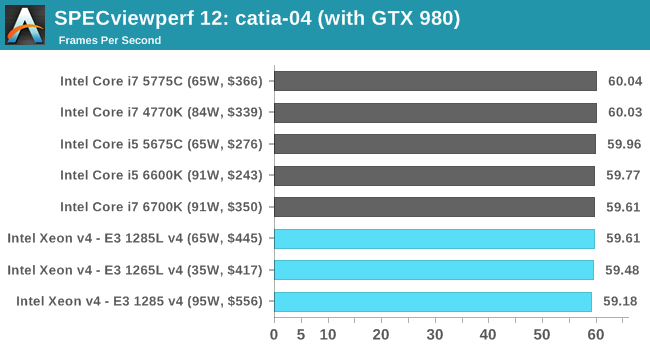
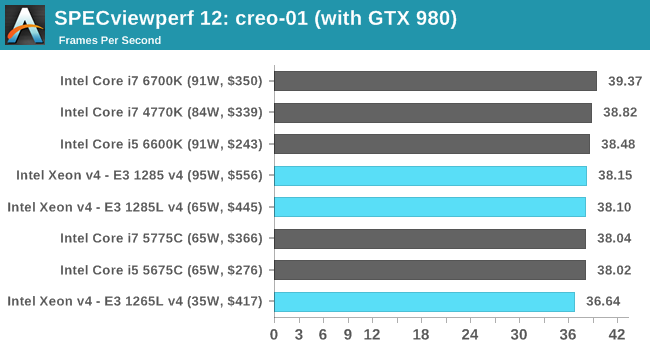
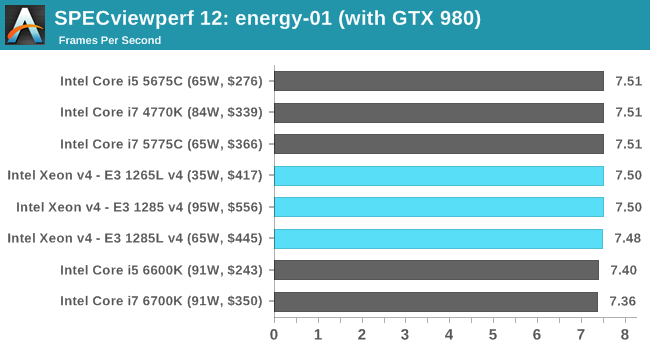
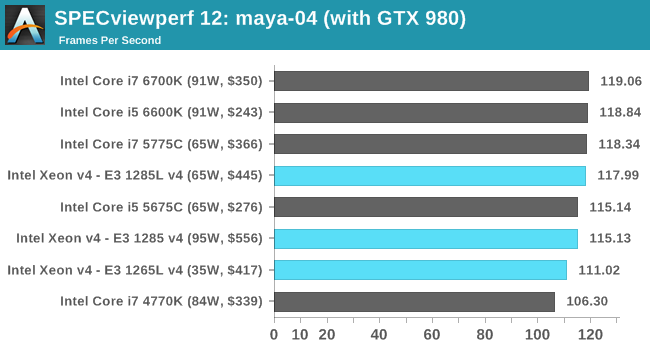
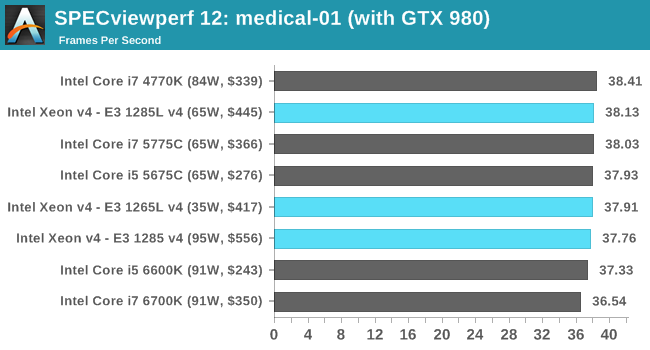
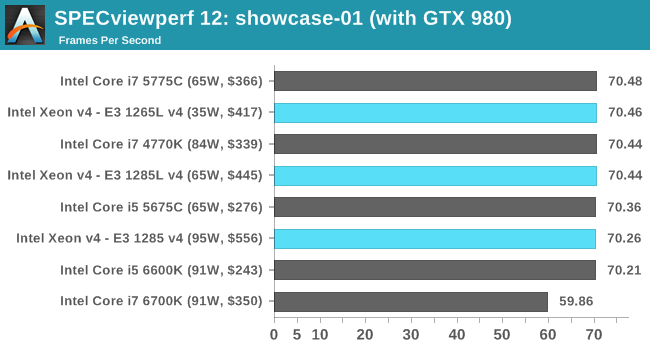

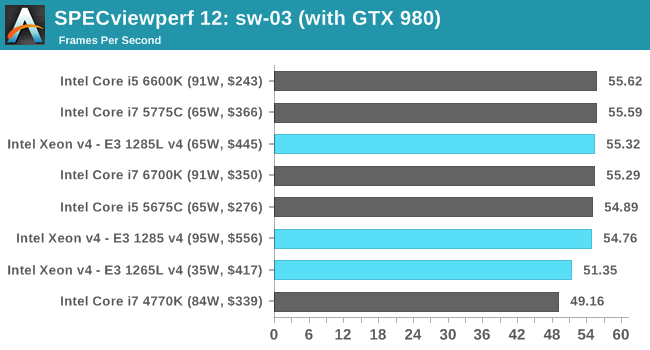
At a certain point it seems that most tests are graphics card bound, however a few show up that having the fastest processor makes a difference. Differences from the Haswell platforms score +5% at best, although a bigger difference can be seen going further back in CPU generations. At this point with a discrete graphics card, SPECviewperf's tests are more akin to our gaming tests when it comes to responsiveness.










72 Comments
View All Comments
lilmoe - Wednesday, August 26, 2015 - link
+1I'm looking forward to the new mobile Xeon chips and would love to see that too.
Ian Cutress - Thursday, August 27, 2015 - link
Working on it! :)satai - Friday, August 28, 2015 - link
Great to hear that.Atari2600 - Wednesday, August 26, 2015 - link
Ian,Primarily in the graphs you compare a 1276 v3 to two flavours of 1285 v4.
But, on the first page, you tabulate the 1285 v3 and 1265 v3.
Would it be possible to include the 1276 v3 in this table?
Just quickly looking at ark.intel; the 1276 v3 has a box price of $350 and seems otherwise identical to the 1285 v3. On the face of it, it appears a disruptor.
Cheers
Brendan
lilmoe - Wednesday, August 26, 2015 - link
That's one hell of a 35W chip. Not bad at all.jamyryals - Wednesday, August 26, 2015 - link
Why does the 95Watt part exist? I don't get it.Gigaplex - Wednesday, August 26, 2015 - link
And why does the 65W chip consume more power than the 95W one?Oxford Guy - Wednesday, August 26, 2015 - link
Because Intel's power consumption ratings are a load of nonsense often enough. And AMD isn't always accurate either. The 8320E, for instance, is rated 95W but actually used 86 in Anandtech's tests. The 8370E is rated 95W but used 107 or something. The 9590 is even further away from its rating.But, Intel is the one gaining the most from this deceptive marketing since people know AMD's FX chips are power-hungry due to being on 32nm and not having had as much money invested in hand-tuning to lower power. So, Intel underestimates the consumption of parts like the 4790K to make its chips seem even more dramatically efficient.
Yuriman - Thursday, August 27, 2015 - link
There's one problem with this: TDP is not "power consumption", but "Thermal Design Power". A chip with a 95w TDP needs to function in an environment designed to dissipate 95w of heat over a given period of time. CPUs can go well over this for short periods.Oxford Guy - Thursday, August 27, 2015 - link
Short periods are one thing. False advertising is another.